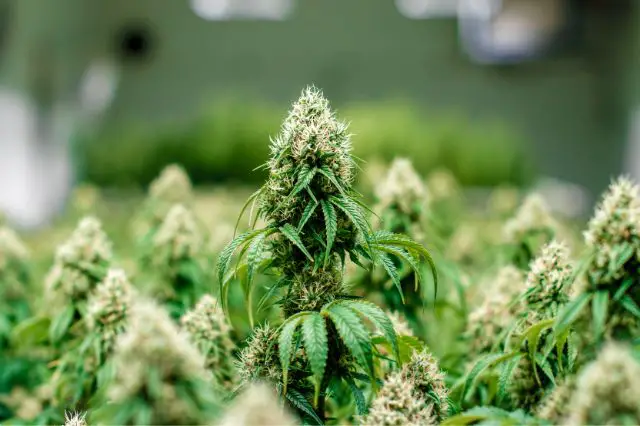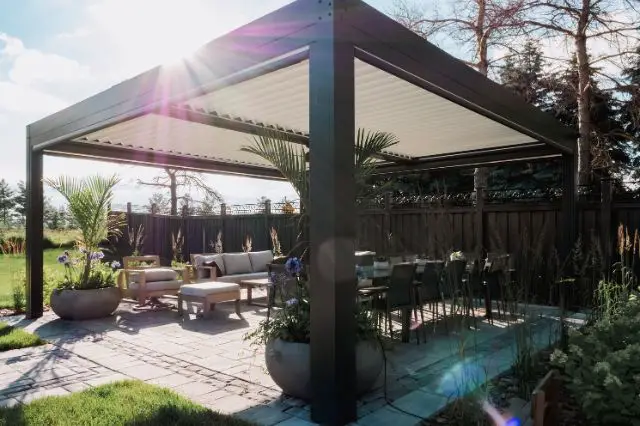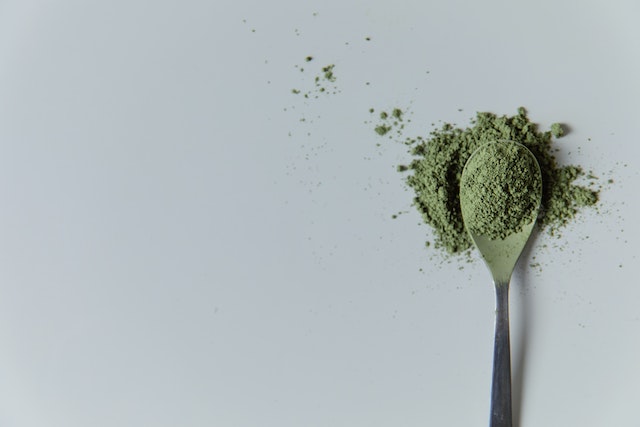Industry
Is It Legal to Grow Cannabis in New Jersey?

Generally, exploring the legal landscape of cannabis cultivation in the United States is a herculean task and this situation can be traced to some reasons. One of the most cited causes of this legal difficulty is the disparity that exists between the United States federal laws and the laws of various states.
Federally, cannabis is regarded as a Schedule 1 drug by the Controlled Substances Act (CSA) 1970. This classification implies that cannabis is viewed as a substance with no accepted medical use and a high potential for abuse. However, states are allowed to enact their laws governing cannabis cultivation, consumption, and distribution.
Also, this legal complexity can be traced to the several conditions and technicalities associated with state laws covering this subject. In this article, we shall be exploring the legal framework of cultivating cannabis seeds in New Jersey and other related issues.
Understanding Cannabis Cultivation in New Jersey from a legal perspective
One frequently asked question by growers or users who are seeking to groom cannabis in the state of New Jersey is if cannabis cultivation is legally permitted. The answer to this question can either be a yes or no depending on the situation. If the above question is viewed through the lens of home growing and personal cultivation the answer to it is in the negative.
However, if the question is asked in the general sense, the answer is in the affirmative. This is because only persons or businesses with an approved cultivator license are allowed to grow cannabis. To be eligible for the cultivator license granted by New Jersey’s Cannabis Regulatory Commission, the licensee must fulfill certain requirements.
These requirements range from paying a specified amount of fees to ensuring that the cultivation system is at par with state standards and also consistently renewing the license upon expiration.
New Jersey’s legal stance on home grooming
As of now, growing cannabis at home in New Jersey is illegal and considered a criminal offense. Hence, if a person is caught by law enforcement agencies he or she may be liable to a fine of at least $25,000 and a prison sentence of at most 20 years.
It should be noted that the fines and prison sentences are apportioned based on the number of cannabis plants groomed by an individual. Little wonder why this offense is classified into three degrees.
Possible factors influencing New Jersey’s cannabis legal stance
According to Herbies, the criminalization of homegrown cannabis both for medical and recreational purposes by the state government of New Jersey is an irony as the state prides itself in being the garden state. Several reasons have been cited for the legal position of New Jersey’s government on cannabis cultivation.
Critics of the cannabis cultivation laws of New Jersey believe that the government’s stance on home growing is financially influenced. They believe that the criminalization of growing cannabis at home stems from the government’s need to maintain a consistent inflow of revenue from the 13 legal dispensaries into the state’s treasury in the form of sale taxes.
This notion has been countered by stating that the strict laws governing cannabis cultivation are targeted at reducing proliferation and illegal distribution.
Also, recent findings have shown that a large percentage of the demographic supporting the legalization of home grooming are registered medical patients. The advocacy of this category of people is triggered by the exorbitant prices usually charged by legal dispensaries to purchase marijuana. In their opinion, once laws legalizing the home grooming of cannabis are enacted, the cost of treating their medical conditions would reduce.
New Jersey’s laws on Cannabis possession, consumption, and distribution
Laws regulating Possession
New Jersey is one of the two states which permits the usage of cannabis for recreational purposes but prohibits home growing. Its other counterpart is Washington. In New Jersey, it is illegal to purchase cannabis from places that do not make up the 13 dispensaries in the state. Before cannabis can be sold to any person, the buyer must show a valid government-issued identification card which must indicate that they are 21 years or older.
In situations where cannabis is found for the first time in the possession of an underaged individual, a warning in the form of writing is issued. However, on subsequent violations, this written warning is usually backed up with a referral to community services.
Also, a recreational purchaser can only be sold a maximum of 1 ounce of cannabis per transaction while a registered medical patient can be sold up to 3 ounces every 30 days from an alternative treatment center. However, an individual is allowed to possess up to 6 ounces of cannabis.
Failure to comply with this regulation is regarded as illegal possession which attracts a prison sentence of 1 years and a maximum fine of $25,000. In addition, if an individual is caught in possession of more than 6 ounces of cannabis within 1000ft of a school, he or she is liable to 100hrs of community service and also an extra fine.
Laws regulating Consumption & distribution
In New Jersey, cannabis can only be consumed on private property and in licensed dispensaries with spaces for onsite consumption. Vaping, eating, or smoking cannabis in regions earmarked as federal lands or public spaces in which it is unauthorized is illegal. It is important to also note that individuals cannot smoke cannabis on a rented property unless the express consent of their landlord is sought.
Also, in the garden state driving under the influence of marijuana is considered an offense and attracts sanctions like a jail sentence, fine payment, and license suspension. The severity of these sanctions is usually dependent on the number of times the offense is committed. Currently, a defaulter may be liable to a license suspension of up to 10 years, a maximum sentence of 6 months, and a fine of up to $1000.
Furthermore, the New Jersey cannabis law punishes illegal distribution of marijuana by imposing fines ranging from $25,000 to $150,000 and also prison sentences between the range of 18 months-20 years on offenders. The fines and jail terms that an offender is liable to pay and observe are dependent on the ounces of cannabis distributed.
Final Thoughts
Although several bills proposing the legalization of home growing in New Jersey have been passed at various times, none of them have been signed into law for various reasons. The legalization of cannabis for both medical and adult use in New Jersey would bring about a redefinition of the cannabis industry.
This is because enacting laws that do not only concentrate cannabis cultivation into the hands of a few businesses but also in the hands of consumers ensures that the quality of cannabis is high and that is fairly priced.
Industry
Who is Suitable for Installing a Pergola on the Site?


Landscaping is an essential process for everyone. Garden designers and architects use pergolas not only as roofs for terraces, entrances, paths, and balconies. With pergolas, you create an eye-catching lure for the eye. It is used for shading, structuring the garden, and as a means to lift flowers.
Flowerbeds, designer paths, and louvered pergola create coziness, where you can gather a large group and spend time with your family. Garden pergolas have almost no limits for creativity. Metal versions are characterized by refined construction and elegant design.
Meaning of pergola
The term pergola comes from the Latin language and means a porch, extension, or railing to connect vines. A pergola is never freestanding. It is attached to a building or is a link. In ancient times, pergolas were shady colonnades between buildings.
Now that we’ve explored pergolas’ origins and characteristics, let’s turn our attention to gazebos. What types of gazebos are there?
- If you prefer steel’s strength to wood’s ability to blend in with its surroundings, a metal pergola (most commonly steel or iron) is your choice. Metal pergolas are much heavier than most other pergolas made of different materials—for example, an aluminum pergola is about 2.5 times lighter than a metal pergola of the same dimensions.
- Aluminum gazebos. The material itself is even lighter than wood, and maintenance of aluminum pergolas is negligible compared to metal pergolas. Aluminum structures have a layer of aluminum oxide that protects the aluminum itself from rusting. Using anodized, liquid, or powder coat paint makes it much easier to use different colors for the aluminum mandrel.
Modern architecture uses many innovative material combinations when building pergolas. The harmonious overall design impression of the building, pergola, and garden should always be the focus when making a purchasing decision.
Purpose of the metal gazebo
A pergola is designed to create additional outdoor space. It would be fatal if you were cramped in a pergola on your terrace or balcony. The considerable distance between the posts ensures sufficient freedom of movement under the metal pergola.
The metal pergola can withstand even strong wind gusts thanks to its strong anchoring to the floor and walls. It offers flowers and fruit as a stable means of climbing. With professional pre-planning, you can create a shaded area on the terrace and balcony that the family will enjoy using.
You can even make a garden on a metal pergola. If the location is suitable, kiwi and grapes grow on the pavilion.
Of course, all the benefits of durability don’t come without cost, either—steel gazebos are usually coated to prevent rust or oxidation, and the entire structure requires significant maintenance, such as cleaning at least once a year with an additional check for loose connections, coating the unit in certain areas to prevent corrosion, etc.
Pergolas, which serve to decorate and shade the place of rest, is located away from the neighbor’s plot and the road, which allows you to spend your free time in silence with a book or a cup of tea to create a stable shadow, the upper part of the arches can be covered with light and flexible material — awning fabric or polycarbonate.
These structures protect not only from the sun but also from a bit of rain. Such pergolas can be installed over the area with a barbecue, table, chairs, or armchairs.
Industry
Why Buying High-Quality Is Worth the Expense


Do you ever wonder if it’s worth spending more money on better quality products and services? With costs rising, it makes sense that most people would be looking for ways to spend less, not more. However, there are times when it’s worth shelling out a little more cash to get something of higher-quality in return.
In fact, there are some instances where this is a necessity and buying inferior quality can do harm. For example, if you’re working with high-pressure hydraulic systems, you can’t afford to go cheap. Your safety requires using high-quality, leak-free couplers to prevent fluid exposure and devastating injection injuries. If you use cheap components, you and anyone who works with your equipment is risking serious injury and/or death.
So, high-quality components, products, and services really are superior, but how can you tell the difference? When should you spend more money, and how do you know you’re getting something superior in return? First, we need to define high-quality.
What is a high-quality product or service?
Every industry is different, and what’s considered high-quality can differ between industries. It all depends on how an item is being used. For example, luxury car manufacturers need to use top-of-the-line tires for looks and to ensure passenger safety. Putting bald tires with holes on a brand new car would not only prevent it from selling, but it would be a major safety violation. However, a company that makes tire swings for playgrounds can use bald, beat-up tires without compromising consumer safety.
With that said, a high-quality product or service is one that can be considered more useful, durable, and long-lasting than other options. If you have a choice between five different options, the high-quality choice will be the one that is less likely to break, offers more necessary features, and won’t require workarounds to make it function.
The consequences of buying poor-quality products and services
Perhaps the most important reasons to choose high-quality from the start are all the unfortunate side effects you’ll avoid:
- Unexpected breakdowns. Ever have a cheap printer die on you when you need to print something for the next day?
- The need for workarounds. That cheap external hard drive was a great deal, but if you have to unplug it and plug it back in ten times to get your computer to read it, was it really worth saving a few bucks?
- Having to buy frequent replacements. When was the last time you had a laptop last more than a few years and still remain fully functional? Many people spend more money buying new laptops every couple of years, dealing with lost data or the hassle of having to move everything to a new device.
- Headaches and frustration. No matter how you slice it, an inferior product or service is bound to generate headaches. For example, products that don’t come with tech support and become useless because you can’t figure out how to make them work.
You don’t actually save money by going cheap
Saving money is a noble effort. There’s nothing wrong with looking for deals, trying to get the best price, and choosing an option that doesn’t cost an arm and a leg. However, it’s important to make sure you’re not basing your decisions on price alone.
If you buy poor-quality items, you’ll be replacing them often, which means spending even more money over time. Some manufacturers plan for this, and make products just good enough to last a short time before a replacement becomes necessary. What seems like a great deal turns out to be a greater expense the first time this happens.
Don’t buy based only on price
Investing in any product or service requires careful consideration for all factors. You need the option that will meet all of your needs and won’t leave you stranded when you need support. You will eventually regret choosing the cheaper, inferior option.
The bottom line is that high-quality products are made from superior materials an are built to last. You won’t have to replace them frequently or have them repaired on a regular basis just to keep them functioning. When you buy high-quality from the start, you get more value for your money and you don’t have to spend all your time troubleshooting or coming up with patch jobs and workarounds.
Reliable products also have a lifespan and will need attention at some point, but not as often and the breakdowns won’t be as severe. If you’re normally someone who makes purchase decisions based solely on price, consider accounting for other factors to ensure you get a quality product or service from the start. Your experience will be better overall, and you’ll spend far less money long-term.
Industry
Kratom Black: Effects, Legality, and Age Restrictions


The recreational product world has always been full of products that have different effects and origins. It also has become a buzzword amongst the young generation and adult users. The market is expanding at a rapid pace, and it can be traced back to ancient times. With the limited infrastructure of the past, there were few ways to experiment with food products and other consumables.
Recreational products were often the source of leisure and also a part of many medicines. For instance, the science of Ayurveda often made use of herbs and recreational products for day-to-day problems. These recreational products were also a part of many celebrations in the older kingdoms. They often also became a part of edibles. However, there was only a limited option. Due to the lack of fast transportation, there were hardly two to three recreational products in the last century. There were large-scale restrictions on the same as governments tried to curb the deaths due to consuming contaminated recreational properties.
The situation has now reversed, and often one finds tens of options in the recreational market. One of them is Kratom, which has become drastically popular globally. New names always grab users’ attention as these products are new to the market. Black Kratom is one of the new strains in the market, which has recently got much hype. A beginner might need clarification with the same, and we will try our best to help. We will dive deeper into the information regarding kratom black strains and the laws around them. We will also explore the effects they have on consumers.
What Are Kratom Strains and Black Kratom Strains?
Kratom strains come from the veins of the Kratom leaf, which are present on the evergreen tree known as mitragyna speciosa. It is also renowned as a popular member of the coffee tree family. Like every evergreen tree, it requires a tropical climate which affects the health of the Kratom leaves. The aging of the leaves directly depends on the conditions and the time they are placed in the fermentation chamber. They go into the fermentation chamber after being picked by farmers. Kratom plantation has become famous among farmers in the United States of America too, and more often than not, they take their learnings from the farmers in Thailand.
The leaves placed for a longer time in the fermentation chamber often turn red in the veins, forming Red Kratom strains. However, if they are kept inside for longer, they become black, leading to Black Kratom strains forming. As they are placed in the fermentation chamber for a longer time, it affects the organic composition inside the leaves, ultimately affecting the Black Kratom strain. It makes them more potent than most Red Kratom strains and perfect for any experienced user experimenting with Kratom consumption.
Effects of Black Strain
Black Kratom has a trance-causing effect on consumers, and let us go into more detail about the same-
Potency
As discussed above, the Kratom leaves for Black Kratom are placed longer in the fermentation chamber. These leaves further spend more time than others, which changes the alkaloid composition. It affects the potency, as the mitragynine extract composition also changes. The potency of this Kratom strain comes from the mitragynine content inside, which is more than 20%. It also has a combination of more than ten alkaloids, further enhancing its composition’s potency. The alkaloids also affect its taste and give it that identical bitter taste.
Effect On Beginners
Beginners in the Kratom world are often new to recreational products like high quality extract tablets, pills etc. One famous case is people shifting from consuming less potent marijuana-based products to more potent Kratom strains. Black strain may induce an intense trance in consumers due to its high mitragynine content inside. It might cause a strong buzz and dizzy feeling simultaneously. It makes it necessary for beginners to consume the Black Kratom strain or liquid Kratom shot in a low dose after consulting their expert friends or health experts. They can also mix it with edibles, decreasing the Kratom strain’s potency. After consuming this potent strain, it will aid them in bearing an intense trance.
Effect On Experienced Users
Experienced users often shift to new Kratom strains to try something more potent or experiment with their favorite recreational product. Experienced users trying the Black Kratom strain might try medium doses. The trance they will go through will be much stronger than after consuming most other Kratom strains. Several users who were fond of Red Kratom strains often highlight Black Kratom strains and their liquid shots as a level above due to potency. For experienced users, the bitter taste of Kratom is something they are already habitual to. Hence, there is an option not to mix this Kratom strain with other edibles and consume it raw.
The Legality of Kratom Strain and Age Restrictions
Like any other recreational product, Kratom is at the center of many controversies in various countries. In addition, there are several cases of Kratom addiction causing withdrawal symptoms, and in some cases, it has also caused deaths. But in all of these cases, users could be overusing Kratom or consuming low-grade Kratom. The study by the CDC states that Kratom overuse was the cause of more than 100 deaths in the United States of America.
All the above information deals with low-quality Kratom and user overuse. There is also more awareness of the potential benefits of Kratom on the users, and Black Kratom strains are no exception. Several countries are now losing the laws and making Kratom legal in their jurisdiction. One popular way is to tighten the quality control over Kratom-based products, which will care for the quality concerns.
Several countries like Thailand, The United States of America, and others allow Kratom use. In the United States of America, most counties allow Kratom consumption. The legal age for Black Kratom strain consumption is more than 18 years. However, it is still banned in many counties in the country. The Black Kratom strain consumption is under a blanket ban in Alabama, Arkansas, Indiana, Rhode Island, Wisconsin, Sarasota County (FL), Union County (NC), Denver (CO), and San Diego (CA).
Final Thoughts
Black Kratom strains are a new but more potent version of typical Kratom strains. They have their benefits, potentially handy for the user, but it is best to control your doses. The best way is to have a diet chart, which will guide you to consume strains of Kratom for PTSD and related issues responsibly. It is also good to check the laws of your county before ordering Black Kratom strain, tablets, or Black Kratom liquid shots.
-



 Captions3 years ago
Captions3 years ago341 Sexy Captions to Fire Up Your Instagram Pictures
-



 Captions3 years ago
Captions3 years ago311 Night Out Captions for Instagram and Your Crazy Night
-



 Captions3 years ago
Captions3 years ago245 Saree Captions for Instagram to Boost Your Selfies in Saree
-



 Captions3 years ago
Captions3 years ago256 Best Ethnic Wear Captions for Instagram on Traditional Dress
-



 Captions3 years ago
Captions3 years ago230 Blurred Picture Captions for Instagram
-



 Captions3 years ago
Captions3 years ago275 Deep Captions for Instagram to Express Your Thoughts
-



 Quotes3 years ago
Quotes3 years ago222 Nail Captions for Instagram to Showcase Your Fresh Manicure
-



 Captions3 years ago
Captions3 years ago211 Laughing Captions for Instagram | Laughter Is the Best Medicine







